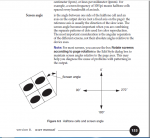MICHEL_GALEGO
Member
Could someone tell me if it is normal what happened to me?
It looks like the Angle of Cyan and Magenta were reversed.
I set up the cyan with 15º and the magenta with 75º, but on the plate the cyan is left with 75º and the magenta with 15º.
Thank you all for helping me.
It looks like the Angle of Cyan and Magenta were reversed.
I set up the cyan with 15º and the magenta with 75º, but on the plate the cyan is left with 75º and the magenta with 15º.
Thank you all for helping me.















